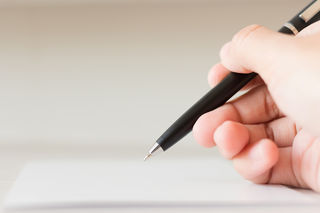Anxiety
From Reactive to Creative–Transforming Anxiety
Solving the unsolvable
Posted December 1, 2019 Reviewed by Hara Estroff Marano
"Between stimulus and response, there is a space.
In that space lies our freedom
and our power to choose our response.
In our response lies our growth and our happiness.” –Dr. Viktor Frankl
The primary task of living organisms is to remain alive. The brain is constantly scanning the environment for threats. We become increasingly conditioned to automatically react to unpleasant stimuli. Any time you are anxious or frustrated you are responding to something that you learned in the past was dangerous–whether the threat was real or perceived.
A common misconception regarding dealing with stress is to “manage it.” The problem is that the most stressful scenarios are the ones that are not manageable. However, stress is not the problem; it is your chemical reaction to it. Anxiety and frustration are automatic, powerful survival responses that are well beyond the reach of direct conscious interventions. Anxiety is a symptom, not a diagnosis and the unpleasant sensations generated by these stress hormones are intended to be so unpleasant that you are compelled you to take avoidance action. But what if you can’t escape?
You Have No Chance of Fixing Yourself
Picture a complex circuit board that has trillions of etched-in circuits that represent your lifetime of programming. You cannot change them for several reasons. First, they are memorized, similar to riding a bicycle. Second, energy spent trying to analyze and figure them out is counterproductive because you are reinforcing them. Finally, as the powerful unconscious brain is estimated to process 11 million bits of information per second compared to your conscious brain processing 40, rational interventions alone cannot hope to make a dent in these circuits. It is like trying to move Mount Everest with a shovel. It is not going to happen and much of your life’s energy is consumed trying.

Sounds Unsolvable
So, how do you deal with your anxiety? You decrease the levels of your stress hormones. That is it. There are many ways of accomplishing this, but the end goal is the same as optimizing your body’s chemical profile.
Understanding that you cannot fix this survival response and separating your identity from the reaction is the first step in the solution. Then there are multiple methods of decreasing the levels of these hormones.
One of them is changing the reaction, which stimulates neuroplastic changes in your brain. Your brain is changing every second with new connections (dendrites), cells (neurons), supporting cells (glia), and insulating material (myelin). It is so active that 25% of human’s metabolic energy is consumed by your brain’s activity. Most mammals have only 2 to 3% of their energy burned by their brains.
Neuroplasticity
The three aspects of stimulating neuroplasticity are: 1) awareness 2) separation 3) redirecting. You must first feel your mental or physical pain before you are able to change directions. We don’t like feeling anxious or angry, so we tend to suppress or disguise the emotion. Suppression really fires up your nervous system. So, you have to learn to first feel and then create some “space” before re-focusing your attention.

Expressive writing is one tool that creates this needed space. It creates an awareness of your thoughts, positive or negative and separates you from them. Its effectiveness has been demonstrated in many research studies. (1)
Here are some thoughts on why it is effective are:
- Associating thoughts with physical sensations forms new neurological connections.
- Writing down thoughts creates a space between you and your thoughts on the paper.
- The verbal route is also effective.
- Your brain associates that space with vision and feeling—part of the unconscious brain.
- You have physically separated from your thoughts.
To begin, the exercise involves writing (scribbling) your thoughts on paper. A critical step is that the paper must be instantly destroyed. This allows you to write with complete freedom and the writing can’t be analyzed. If you kept the writing, the thoughts would only be reinforced. There are many variations of expressive writing but immediately getting rid of the paper is the one common step. One of my most remarkably successful colleagues succinctly pointed out, “You hold on to the writing, you are holding on to the pain.” We have discovered that expressive writing is the one necessary step to begin and continue your journey to deep healing.
Reactive versus Creative
The difference between these two words—and these two concepts—is that in the word “creative,” the “C” ("see") is at the beginning.
You must see a problem first before you can solve it.
In “reactive,” the “C” is buried in the middle of the word. Creativity is limited when you are in the midst of reacting. It is helpful to be aware of both of these two words throughout the day. You can quickly see that you are reactive mode and can switch into a creative mode instead.
Reactive to Creative
When you can “see” both your global and day-to-day reactions, you have choices of more rational responses that will energize your life. But the “C/see” must be first.
References
Frankl, Viktor. Man's Search for Meaning. Beacon Press, Boston, MA, 2006.




